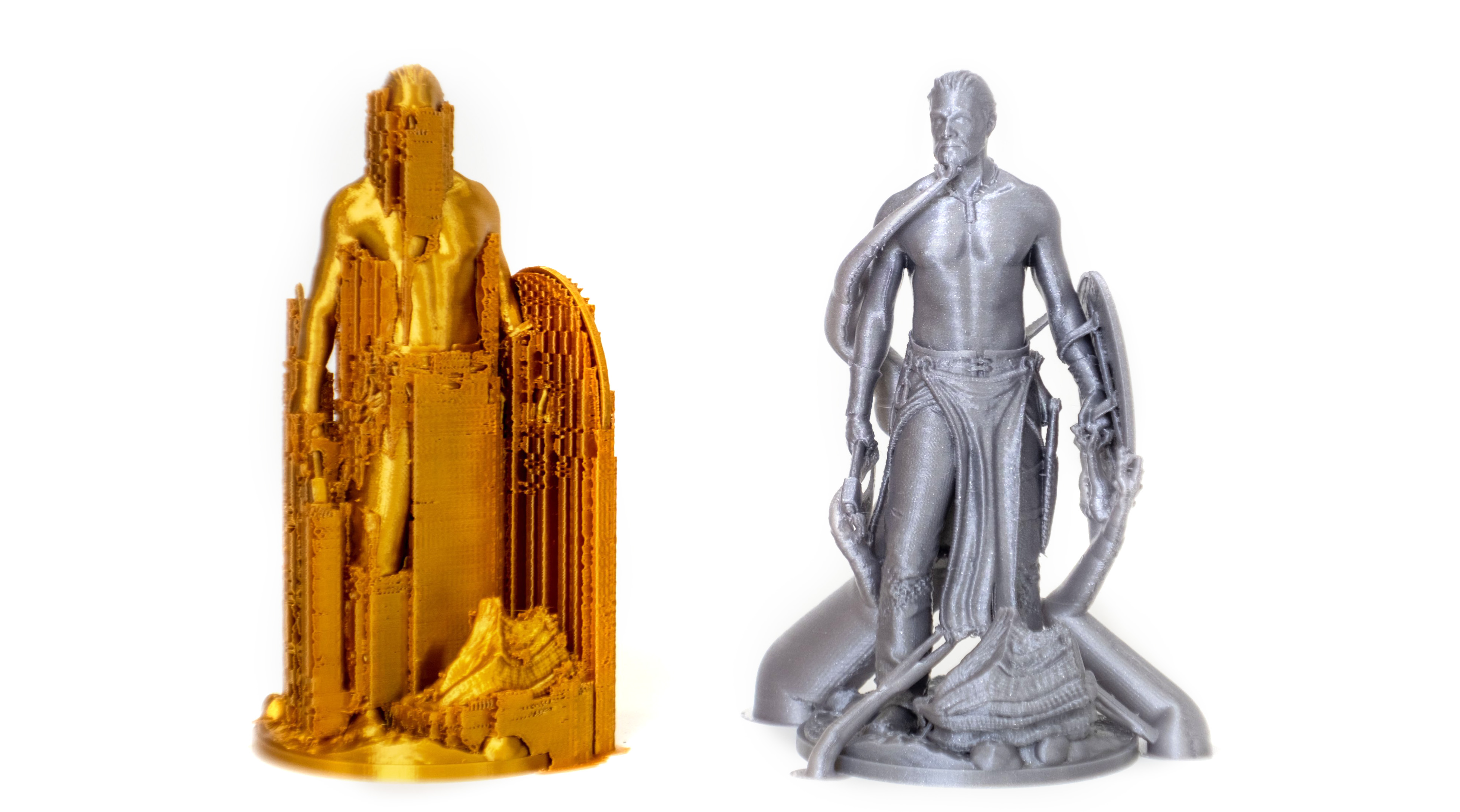Organické podpěry jsou typem podpěrné struktury, která je k dispozici v PrusaSliceru.
PrusaSlicer dříve vždy používal ke generování podpěr přístup založený na 2D mřížce. Ačkoli tato metoda v mnoha situacích poskytovala slušné výsledky, měla svá omezení. Podpěry často spotřebovávaly poměrně velké množství filamentu, jejich tisk trval dlouho, končily v místech, odkud se obtížně odstraňovaly, a po jejich odstranění zůstávaly na modelu viditelné stopy. Zejména pokud nebylo správně vyladěno nastavení. Některé z těchto nevýhod jsme vylepšili zavedením podpěr typu „Přiléhavé“ (Snug) ve verzi PrusaSlicer 2.4.

Organické podpěry jsou naší výrazně vylepšenou implementací stromových podpěr. Nový název pro naše podpěry jsme zvolili kvůli jejich výrazně hladkému tvaru a několika odlišnostem v jejich chování.
Na rozdíl od dříve běžné implementace stromových podpěr je větvení organických podpěr chytřejší a my jsme je udělali rovnější (kratší), plynulejší a stabilnější. Průřez kolmý na osu větví je zaručeně kruhový a algoritmus automaticky používá dvojité obvodové stěny stromů, kde je to potřeba (lze to konfigurovat).
Organické podpěry jsou snadno odstranitelné, nezanechávají na povrchu stopy a jejich tisk je rychlý a levný.
Po zapnutí generování podpěr můžete přepnout na organické podpěry v části Nastavení tisku - Volby pro podpěry a raft - Styl.
Kromě nastavení společných pro všechny typy podpěr existují další nastavení specifická pro organické podpěry
Nastavení organických podpěr
Maximální úhel větve
Maximální úhel větví, když se větve musí vyhnout modelu. Použijte menší úhel, aby byly svislejší a stabilnější. Použijte větší úhel, aby měly větší dosah.
Preferovaný úhel větve
Preferovaný úhel větví, když se nemusí vyhýbat modelu. Použijte menší úhel, aby byly svislejší a stabilnější. Větší úhel použijte, aby se větve rychleji spojovaly.
Průměr větve
Průměr nejtenčích větví organických podpěr. Silnější větve jsou pevnější. Větve směrem k základně budou širší než tato hodnota.
Úhel definující průměr větve
Úhel průměru větví, jak se postupně zesilují směrem dolů. Úhel 0 způsobí, že větve budou mít po celé délce stejnou tloušťku. Trochu větší úhel může zvýšit stabilitu organických podpěr.
Průměr větve s dvojitými zdmi
Větve s plochou větší, než je plocha kruhu o tomto průměru, budou kvůli stabilitě vytištěny s dvojitými stěnami.
Nastavte tuto hodnotu na nulu, abyste neměli dvojité stěny.
Průměr hrotu
Průměr špičky větve pro organické podpěry.
Vzdálenost větví
Jak daleko od sebe musí být větve, když se dotýkají modelu. Pokud bude tato vzdálenost malá, bude se podpoěra stromu dotýkat modelu ve více bodech, což povede k lepšímu tisku převisů, ale podpěra se pak bude hůře odstraňovat.
Hustota větví
Upravuje hustotu podpěrné struktury použité k vytvoření špiček větví. Vyšší hodnota vede k lepším převisům, ale podpěry se hůře odstraňují. Pokud jsou potřeba hustá rozhraní, doporučujeme místo použití vysoké hodnoty hustoty větví ponechat povolená rozhraní horních podpěr.
Organické podpěry lze ručně vynutit nebo zablokovat pomocí nástroje Malovat podpěr.
1 komentář